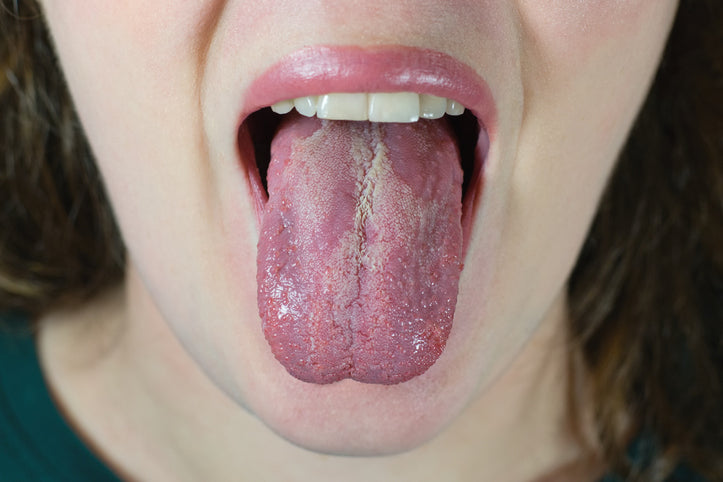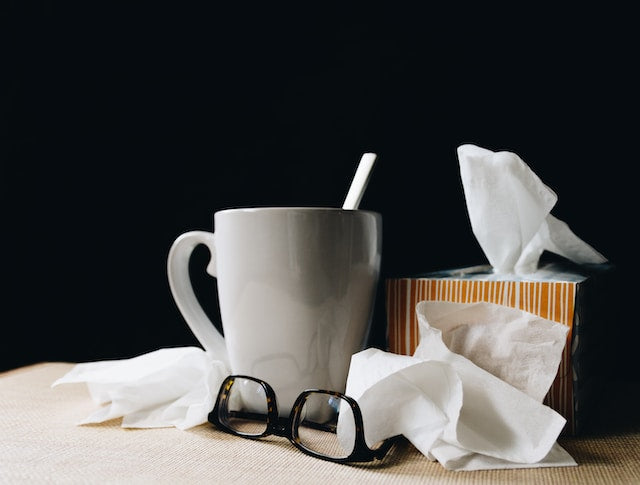If you're like a majority of the US population, you've probably had Candida at some point in your life. This fungal infection caused by yeast overgrowth can occur vaginally, topically or orally—making it incredibly common.
What is Candida?
Candida albicans is the yeast that lives in your gut and throughout your body. Good gut bacteria helps keep it in check, but Candida can appear and grow exponentially when there's an imbalance of healthy gut bacteria.
While the symptoms of this imbalance can vary widely, there's a simple trick you can do at home to see if you have Candida. And fortunately, getting rid of it naturally is possible. Through a few tweaks to your lifestyle and a thorough review from a health care practitioner to nail down ideal supplementation, you can eradicate Candida for good.
Candida symptoms
Before taking a self-test, take note of whether you have any of the following symptoms. Note that most of these are often tied to other health care concerns, making it difficult to diagnose:
- Frequent vaginal yeast infections
- Itchiness in the vagina, anus or ears
- Bloating or gas after meals
- Food allergies or sensitivities
- Cognition difficulties
- Mood swings
- Headaches or dizziness
- Low libido
- Coated or white tongue
- Joint pain
- Sinus infections
- Weakened immune system
How to test for Candida
While it's not entirely foolproof, there's a simple self-test you can perform to see if you may have Candida. Whether you choose to clear it yourself naturally or would prefer to rely on a health care practitioner, it's a good idea to confirm or rule it out.
To take the test, fill up a glass of filtered water before bed and place it on your nightstand. When you wake in the morning, take a healthy sip of water, swish it around in your mouth and then swallow it. Once saliva has formed in your mouth, spit it into the glass.
After a few minutes, take a look at the water. If your saliva has floating strings attached to it, if cloudy specks are suspended in the water or if the saliva looks heavy and dense at the bottom of the glass, you likely have Candida. The sooner it appears, the stronger it is.
Eat this, not that: Candida edition
To improve gut health, it's important to remove foods that feed Candida yeast or make your existing inflammation worse. As you might have guessed, these foods are high in sugar and often processed. The good news is there's lots of options for foods to eat to help rid the body of this disruptive fungus.
Foods to eat
Similar to most natural food-focused diets, eating whole, ideally organic unprocessed foods helps support Candida leaving the body. Here's a sampling of food groups to enjoy.
- Non-starchy vegetables: Asparagus, broccoli, Brussels sprouts, cauliflower, cucumber, eggplant, garlic, jicama, kale, onions, spinach, and zucchini
- Low-sugar fruits: Avocado, lemons, limes, and strawberries
- Gluten-free grains: Buckwheat, millet, and quinoa, as well as almond and coconut flour for baking
- Animal proteins: Grass-fed, organic lean beef, chicken, and turkey, as well as farm-fresh eggs and bone broth
- Dairy: Probiotic-rich yogurt, kimchi, and kefir; kombucha is often too high in sugar and should be avoided
- Nuts and seeds: Brazil nuts, pecans, and sunflower seeds
- Condiments, herbs, and spices: Apple cider vinegar, cinnamon, and turmeric, as well as antifungal olive and coconut oils
- Liquids: Chicory coffee, herbal teas, and water
Foods to avoid
Avoid sugary foods, which allow Candida to feed and spread throughout the body, Unfortunately, this also includes most fruits (Candida doesn't distinguish between natural and artificial sweeteners).
Also steer clear of gluten, which can cause inflammation even if you're not otherwise affected by it. It can worsen existing symptoms and allow Candida to feed and grow, damaging the gut in the process. Avoid barley, rye and wheat, and check labels carefully for gluten on the ingredients list.
Other pro-inflammatory foods to avoid include refined vegetable and soybean oils, processed foods with artificial additives, processed meats, pasta and white bread, and processed snacks like pretzels and potato chips.
Lastly, alcohol and caffeine should be banished from your daily regimen until you can fully eliminate Candida from your system.
Doing the extra work
Consider using natural supplements to support eliminating Candida toxins and restoring your gut health. This includes antifungal supplements and probiotics specifically for Candida, as well as a detox supplement. Milk thistle and molybdenum are both great for cleansing the liver as you're detoxifying, as is vitamin C.
Other good detoxification methods include sauna therapy, skin brushing, and lymphatic massage. The liver will be working hard during this time, so it needs all the support it can get!
Understanding Candida die-off
Throughout the process to eliminate Candida, there's a period known as the Candida die-off, which can be quite uncomfortable. This die-off occurs because the Candida cells break down and release all of their toxins simultaneously, which can lead to a feeling of overload in the body—particularly the liver.
The most common side effects during this time include nausea, fatigue, and headaches, but symptoms can also include body aches, swollen glands, bloating and gas, chills or fever, skin breakouts, and vaginal infections. However, these symptoms are a clear indication that Candida is leaving the body, and they generally last a week or two.
The bottom line
You are your best advocate for determining if you have Candida and taking the next steps. If you believe you have it, find a health care provider with experience helping patients manage Candida, then follow a plan so you can start feeling like you again.




